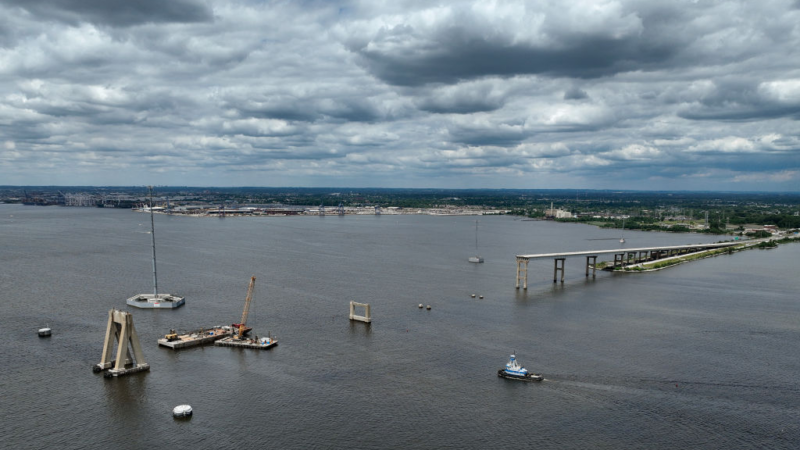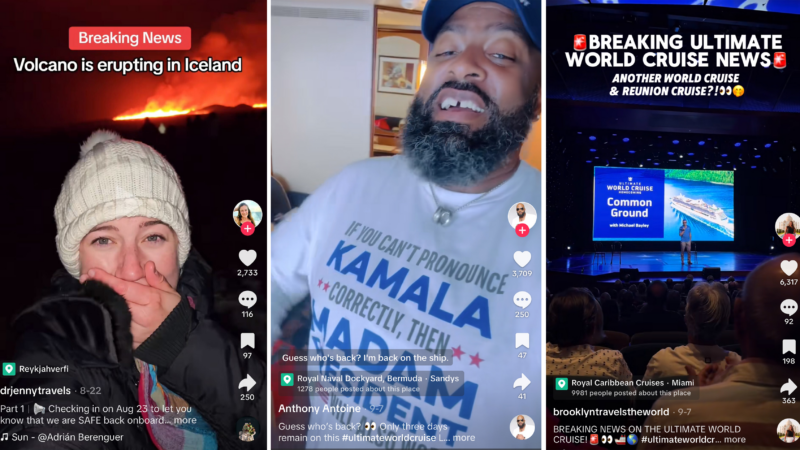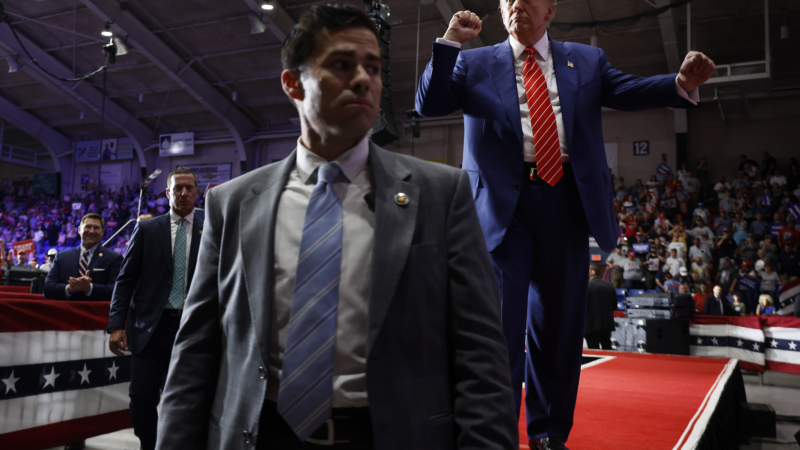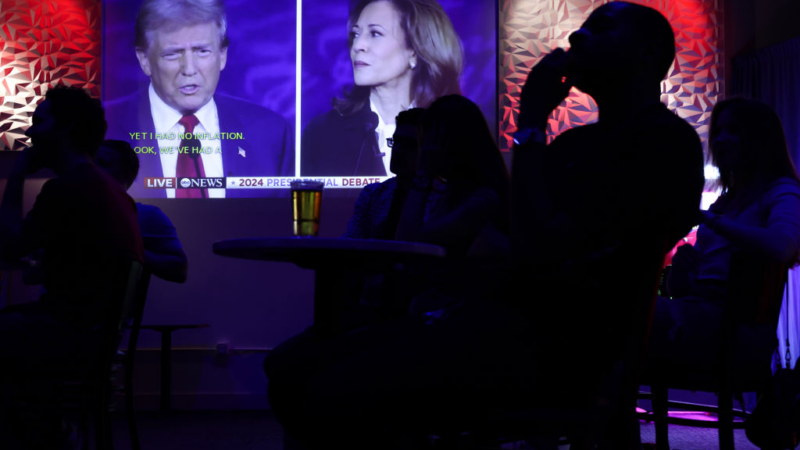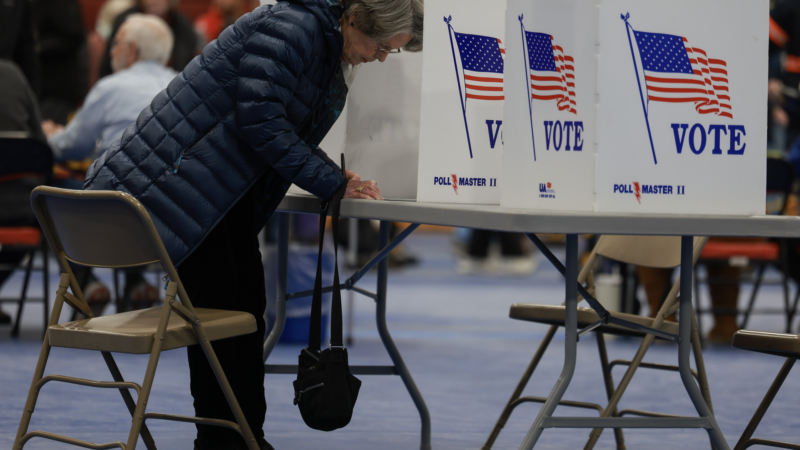U.S. sues Dali ship owner and operator for $100 million over Baltimore bridge collapse
The Department of Justice is suing the owner and operator of the container ship Dali, saying negligence and dangerous cost-cutting decisions led to the ship ramming into — and destroying — Baltimore’s Francis Scott Key Bridge in March.
The catastrophe killed six construction workers and shut down a busy port for months; it also obliterated a segment of Interstate 695 carried by the bridge.
“The ship’s owner and manager … sent an ill-prepared crew on an abjectly unseaworthy vessel to navigate the United States’ waterways,” the Justice Department alleges in a civil claim that was filed on Wednesday in a federal court in Maryland.
The government is suing two Singapore-based corporations, Grace Ocean Private Limited and Synergy Marine Private Limited, seeking more than $100 million in costs the U.S. incurred in responding to the disaster.

“The Justice Department is committed to ensuring accountability for those responsible for the destruction of the Francis Scott Key Bridge, which resulted in the tragic deaths of six people and disrupted our country’s transportation and defense infrastructure,” Attorney General Merrick B. Garland said in a news release.
The civil claim cites costs such as the emergency response to the disaster and the clearing of some 50,000 tons of steel and other materials to create a temporary channel for ships to navigate to and from the port.
Those costs, Garland said, should be “borne by the companies that caused the crash, not by the American taxpayer.”
According to court filings, the ship’s owner, Grace Ocean, and its operator, Synergy, had sought to cap their liability at less than $44 million.
The federal claim does not include the cost of rebuilding the bridge: Because Maryland built and owned the bridge, the state will pursue its own compensation, according to the Justice Department.

The U.S. says the calamity was “entirely avoidable” and was caused by a sequence of failures that resulted in the ship losing power — and thus, its ability to steer.
The claim lays out a sequence of failures, stating that as the ship went into crisis mode with a qualified local pilot at the helm, “none of the four means available to help control the DALI — her propeller, rudder, anchor, or bow thruster — worked when they were needed to avert or even mitigate this disaster.”
It all started, the U.S. says, when the Dali’s number 1 step-down transformer — a massive device that converts high-voltage power from diesel generators into usable lower-voltage power — failed as the cargo ship approached the Key Bridge.
The transformer had long been known to suffer from heavy vibrations that raised the risk of an eventual failure, according to the claim. But rather than fix the problem, the Justice Department alleges, the Dali’s owner and operator “jury-rigged their ship,” including wedging a large hook into a space in an attempt to brace the transformer.

Here’s how the U.S. claim describes what happened next:
“With the failure at the number 1 step-down transformer, all power stopped flowing to the ship’s 440-volt electrical panel. The bridge and engine room went completely dark, the crew could not steer, and the main engine stopped, which caused the propeller to stop turning. At that point, the power should have transferred automatically to the backup number 2 step-down transformer within just a few seconds, while there was still ample time to steer away from the bridge. But this automation, a safety feature tailor made for the occasion at hand, had been recklessly disabled. The engineers were left struggling in the dark to manually reset the tripped circuit breakers for the number 1 step-down transformer. This took them a full minute, wasting critical time to regain control of the ship.”
Over the next several minutes, none of the backup systems could help bring enough power back to the ship to avoid striking the bridge, the Justice Department says.
Why Teamsters won’t endorse a candidate for 2024. And, how to avoid credit card debt.
The Teamsters, a large and prominent union, is not endorsing a presidential candidate this cycle, breaking away from what other labor unions are doing. And, tips on how to avoid credit card debt.
Ukraine keeps up the fight against HIV while fighting a war
Progress in preventing infections was being made in the country with Europe's second-highest number of HIV cases. Then came the Russian invasion.
A viral nine-month world cruise saw plenty of drama, but not the kind you’d expect
The "Ultimate World Cruise" consumed social media, with many comparing it to a reality show. But what was it really like? Passengers spoke with NPR, nine months and 60-plus countries later.
2 close calls have the Secret Service facing criticism and an uncertain future
The Secret Service is again facing criticism following a second apparent attempt on former President Donald Trump's life.
10 undecided voters explain why they haven’t picked a side in this election
With the presidential election between Kamala Harris and Donald Trump as close as it is, the small percentage of undecided voters could have a big impact on the outcome.
Concerns about noncitizen voting drive sweeping new restrictions in New Hampshire
A new law in New Hampshire will require anyone registering to vote for the first time in the Granite State to provide documentation they are U.S. citizens, like a birth certificate or passport.
